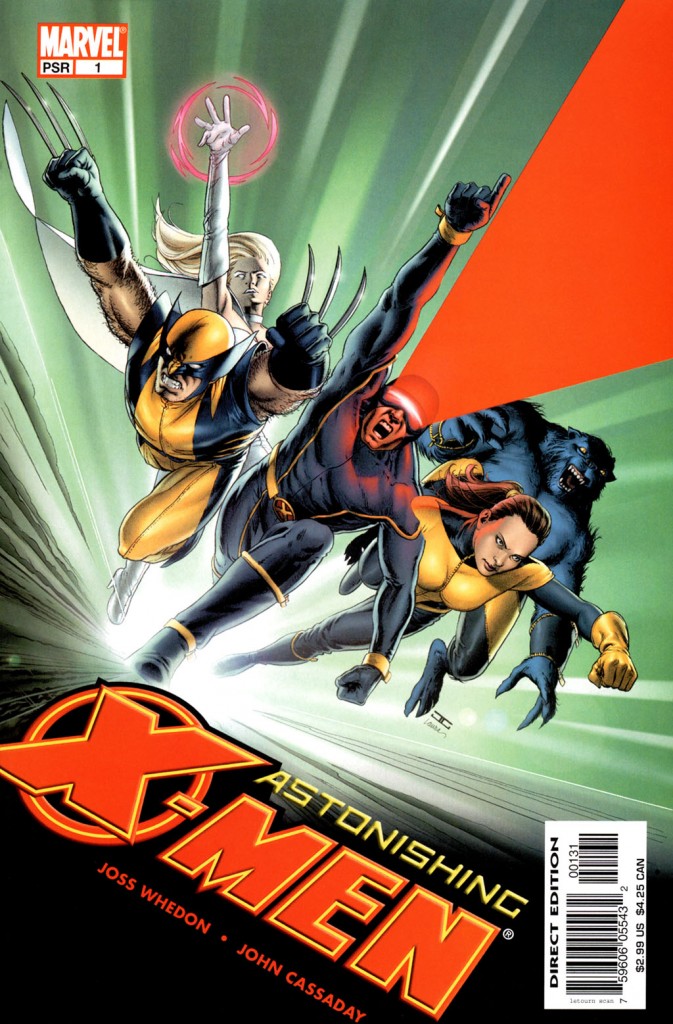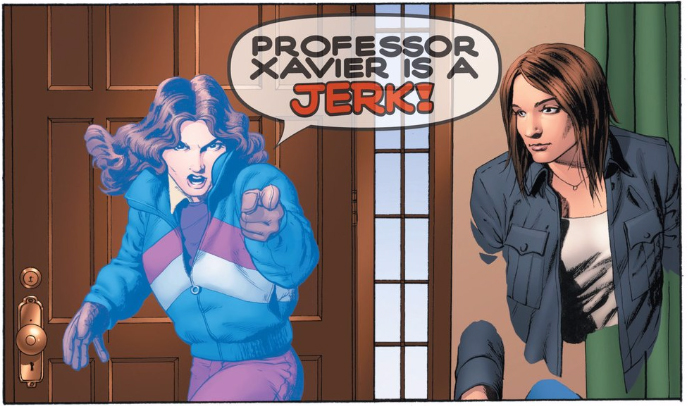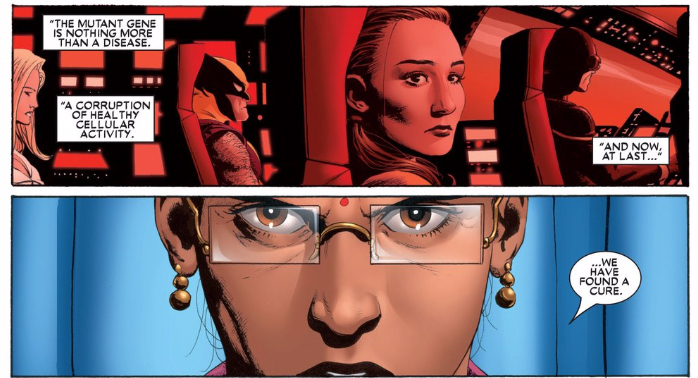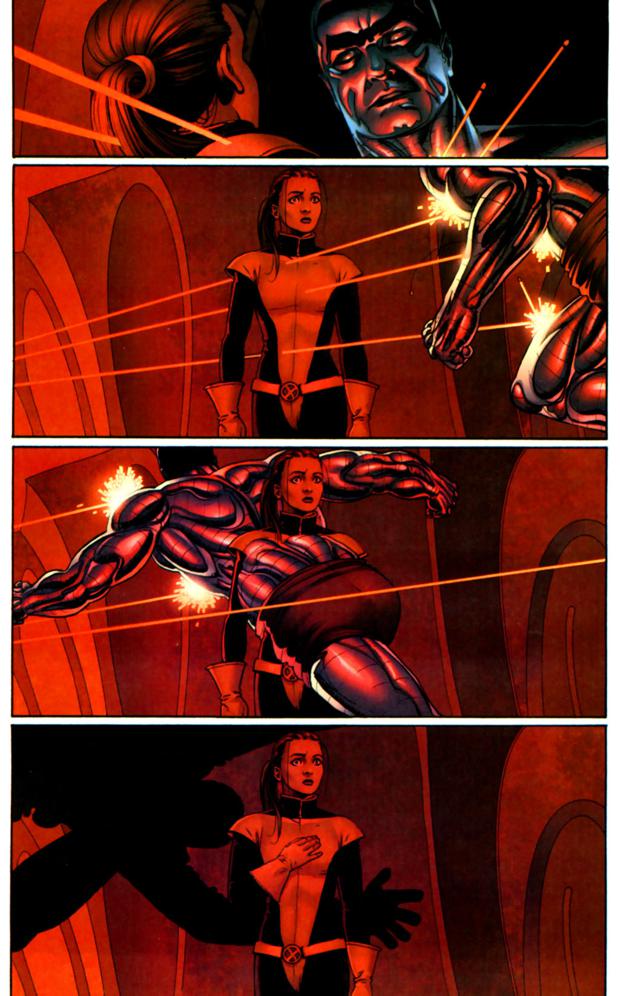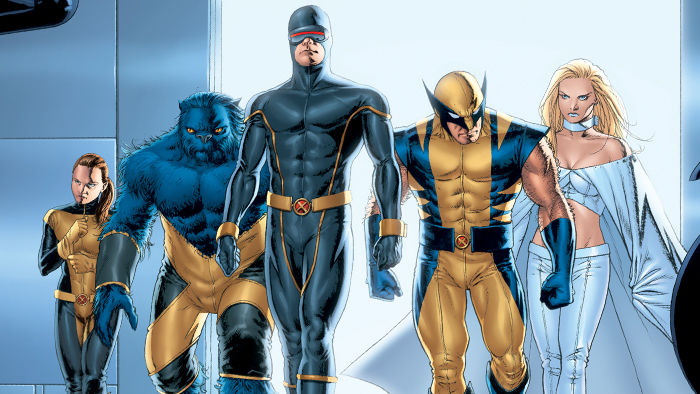With the release of the first X-Men film in 2000, audiences not only witnessed the dawn of the modern day superhero film boom, but also the beginning of a complicated franchise that would span sixteen years and nine films. With X-Men: Apocalypse on the horizon, Kayleigh Hearn and a rotating cast of merry mutants are revisiting the X-Men films from the very beginning, and examining the comic book storylines that inspired them. What would you prefer, yellow spandex?
“Gifted” – Astonishing X-Men #1-6 (2004)
By Joss Whedon and John Cassaday
Kayleigh: If you thought we were done talking about X-Men: The Last Stand and the comics that inspired it, nope! The Last Stand mashed up two critically-acclaimed X-Men stories, The Dark Phoenix Saga and the “Gifted” arc of Astonishing X-Men. Whedon and Cassaday’s Astonishing X-Men has been one of the most acclaimed superhero comics of the 2000s, and to date it has the quickest leap from X-Men page to screen; “Gifted” was published in 2004, and The Last Stand was made just two years later. As botched as The Last Stand is, adapting “Gifted” feels today like an especially prescient decision, since Whedon would eventually helm two behemoth Avengers films. But I have to out myself as an X-Heretic again: I’m not a fan of this run.
Dylan: Astonishing X-Men was immediately celebrated by critics and has since become less popular, sort of like Joss Whedon himself and just about everything he’s ever produced. And while I’ve also cooled on the man and his work, I still place Whedon and Cassaday’s run as one of my favorites in the X-canon. I’m still a sucker for the Buffy-style wit, the predictably tragic plot twists, and for the way Astonishing plays with the different elements and subgenres that make the X-Men so much fun. Action+Friendship+Romance+Metaphor+Space Aliens=X-Men, and like Claremont and Byrne’s Dark Phoenix Saga before it, “Gifted” has all the ingredients, it’s just baked differently.
Kayleigh: Some of my reasons for disliking Astonishing X-Men are purely personal taste: aside from Kitty Pryde, I’m not interested in the team line-up, and I really disliked the newly established Scott/Emma romance. Then there’s the Obligatory Resurrected X-Man plotline…but I’m getting ahead of myself. Like a lot of nerds growing up in the early 2000s I was raised on a steady diet of Buffy and Firefly, but at some point Whedon’s quippy writing and I parted ways. It just feels like something I’ve outgrown. But Whedon is clearly a longtime X-Men fan, and if you’re reading this you probably already know bits of trivia like the fact that Kitty Pryde was a big influence on Buffy Summers. So it’s no surprise Astonishing X-Men opens with Kitty Pryde returning to the X-Men. The first issue is like a strong pilot episode, hitting a lot of the classic X-Men beats: Kitty as the POV character, a Sentinel attack (sort of), and a big “humans will always hate and fear us” speech. Whedon definitely knows what makes the X-Men tick.
Dylan: I mentioned in Monday’s installment that Kitty Pryde is my favorite X-Man, and this run is one of the reasons for that. I actually read “Gifted” long before I ever got to Claremont’s X-Men, and before reading Astonishing my only introduction to Shadowcat had been the interesting but very different take on the character from X-Men: Evolution, so you can imagine that this story made a strong impression. To me, Kitty is kind of like Marvel’s version of Dick Grayson in that she’s so cool and so perfect and yet you sort of believe you could be her. Also like Dick Grayson, if you’re so oriented, you’re probably at least a little in love with her, because she rules. “Gifted” even pokes a little fun at this when young student Hisako points out that all the older Xavier Institute boys hang onto the vain hope that she might go out with them. It takes a deft hand to maintain a balance between a fan-insert proxy and an actually interesting character with her own motivation, and I think Whedon knows how to walk that line, though your mileage may vary.
Kayleigh: One of the strongest elements of the book is the tension between Kitty and Emma Frost. In Part 2 we talked about how influential The Dark Phoenix Saga is, and here’s a good example. Kitty and Emma both made their first appearances in The Dark Phoenix Saga, where the then-villainous White Queen attacks a very young Kitty and the X-Men. Though Emma has since reformed, Kitty has a great speech where she makes it clear she’s never forgiven Emma for that first attack, and she even considers her to be evil. Though Emma and Kitty’s banter would rely on “catty” quips too much for my taste, Kitty’s simmering distrust for Emma is my favorite part of Astonishing.
Dylan: You mentioned earlier that part of the reason you don’t care for this run is that you dislike the romance between Emma Frost and Scott Summers, and I can’t disagree with you there—while I love Grant Morrison’s New X-Men run (to which Astonishing serves as a sequel of sorts), it never really made sense to me for the Scott/Emma affair to continue into a full-fledged romantic relationship that lasted nearly a decade in real time. But separated from Scott, Emma Frost is a really fascinating character to me, particularly in this run. Jean Grey was a truly great human being whose powers frequently tempted her to do evil. Now here’s Emma Frost—her counterpart in many ways—a fundamentally flawed person who’s tempted to do good even though it doesn’t suit her at all. To extend the Buffy connection, she’s sort of like Spike.
Kayleigh: This is one reason I’m so sad (adult) Jean Grey is still dead; I think Jean and Emma acting as foils for each other is much more interesting than Scott/Emma! Scott and Emma together always felt too dark and cynical for me, and I could never see how they were supposed to bring out the best in each other. Whedon wants us to chuckle at Scott’s “You aren’t mind controlling me, right?” exchange with Emma, but it makes me cringe.
Dylan: So far we’ve talked a lot about the existing elements of the X-Men toybox that Whedon and Cassaday got to play with, but “Gifted’s” big original contribution to the mythology, the story that inspired the film, is the Mutant Cure. The most stunning thing about the Cure concept is that it took forty years for someone to introduce it. It seems so glaringly obvious in hindsight—well, of course, Mutants are so called because they have a mutation, and typically modern medicine frowns on that sort of thing. The idea that such a development would split the Mutant population down the middle is toyed with on a small, personal scale in “Gifted” rather than the all-out war we see in The Last Stand, and I much prefer it here.
Kayleigh: “Gifted” also introduces Kavita Rao, who, despite creating a “cure” for mutation has actually stuck around as a recurring X-Men supporting character to the present day. In The Last Stand she’s basically a nonentity, as the movie has so little use for decent characterizations that we learn nothing about her or why she thinks the cure is necessary. Then she gets a pointless death scene. “Gifted,” by contrast, tries to humanize her a bit by suggesting her cure has saved the life of a young mutant girl with uncontrollably deadly powers. Between the two, the comic is obviously the more thoughtful story. But then we find out the cure exists through experimenting on mutants, and that brings us to…Colossus.
Dylan: When re-reading “Gifted” this week, just after The Dark Phoenix Saga, it struck me that while the core X-Men’s characterizations are all very close to their classic interpretations, Colossus being reintroduced as “MADE…OF…RAAAAAAGE” seemed like the biggest stretch. Claremont’s Colossus is a character defined as much by his pure spirit and reluctance to do harm as he is by his incredible strength and invulnerability. Whedon and Cassaday don’t throw that away, exactly, but after years being tortured and experimented on, ole Piotr is on a hair-trigger now and his newfound anger issues remain a key part of his character to this day. (He was even the Juggernaut for a while.)
Kayleigh: X-Men deaths: they don’t last! So while Colossus returning from the dead is just the kind of thing that happens in the Marvel Universe, I’m not a fan of how Whedon writes the Colossus/Kitty relationship. I think those two worked best as a “first love, first broken heart” type of relationship, and retrofitting Colossus to be Kitty’s One True Love felt very reductive to me, like Kitty isn’t allowed to emotionally grow up from the wide-eyed 14-year-old who thought the older (too old, hmmph) Colossus was just the dreamiest.
The way their reunion scene is framed is also really similar to Buffy and Angel’s after he was resurrected–which points to the problem of “sameyness” in Whedon’s writing, where he can only write about the same five ultra-quippy characters. Abigail Brand makes a snarky “Sure, that’ll last” comment about Jean Grey’s death. But Abigail never knew Jean, so why is she making that joke, other than it’s a sly meta-comment the readers will chuckle at? It’s the “yellow spandex” line all over again.
Dylan: Even if you’re not nuts about Joss Whedon, it’s hard not to get psyched about John Cassaday’s art on this run. Cassaday’s neoclassic costume designs are pitch perfect in my book, particularly his Cyclops. His action is dynamic and exciting, of course, but my favorite thing about John Cassaday is his attention to faces. Unlike some superhero artists who struggle to distinguish between their characters when they’re not wearing masks, each member of Cassaday’s cast has strong, instantly recognizable features, and they emote in a realistic yet very comic book way. And I’m just nuts about Laura Martin’s colors.
Kayleigh: Cassaday has a very strong, “cinematic” approach to comics composition, and it puts the bland visuals in The Last Stand to shame. How awesome would it have been to see the holographic Sentinels “attack” the mansion, instead of just getting a random, decapitated robot head? His character work is very strong too–there are a lot of little details I love, like the thin wisps of hair that fall loose from Kitty’s ponytail.
Dylan: Pairing Cassaday with Whedon makes all the sense in the world, since they both fall into that “comics filmmakers” category, and I’d argue they bring out the best in each other. While I can’t deny that their run on Astonishing has its flaws (mainly due to Joss; Cassaday is running on all cylinders throughout), “Gifted” is a rock solid story that deserved a much, much better movie than the one it got.
NEXT WEEK: WOLVERINE

